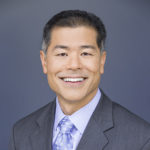
Dr. Michael Miyasaki
The reality for many is that inflation has taken some of the wind out of their spending ‘sails’. Decisions about want-based elective dentistry may come down to true need. In the PAC Newsletter, we often see ten-unit cases. Why do we like doing ten units better than fewer? When we do more units we can use the preparations to move midlines, realign the teeth, correct tooth proportions, and we can better control the uniformity of the color. Doing more veneers usually means we have more control and, can oftentimes provide a nicer result. I explain to patients that it is like building a house. If we build a house from scratch, we have fewer restrictions and we can build our vision. Compared to when we remodel an existing structure, we try to improve the house, but often we are constrained by what exists. I have also written in the past about the single tooth indirect restoration and the challenges that go along with it. Today we are going to talk about the real-world challenges of doing more than one but less than ten and satisfying the patient.
This is going to be more relevant with today’s economic uncertainty. We may see patients wanting nicer smiles but being limited on funds. This is one of those cases. Over 20 years ago, the patient had nice veneers done on teeth #7-10 (Fig. 1) Over time the veneers had become quite yellow, the gingival margins were very exposed, and the centrals were beginning to shift so that #9 was now overlapping #8 (Fig. 2).
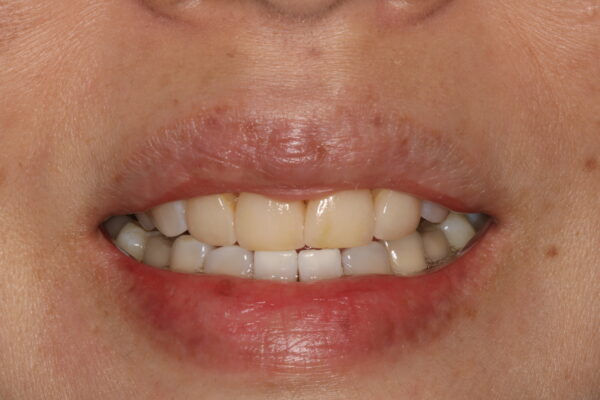
Figure 1
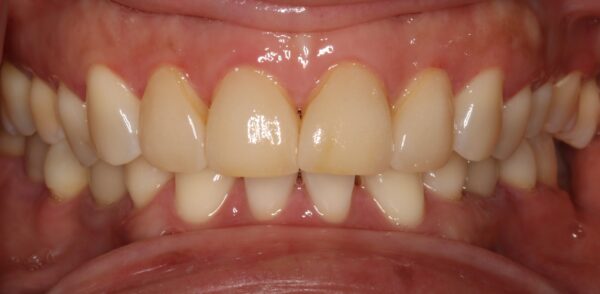
Figure 2
I had numerous ideas on how to fix the case, but the patient needed me to listen to her concerns and then recommend treatment to achieve her goals. Based on her financial situation, it was clear that we were only going to be able to replace the four existing restorations. I needed to be clear about the limitations and set realistic expectations for the patient. Patients sometimes expect just one veneer will create their dream smile, but most of the time this is not the case. In a case like this, before we do any preparation, I need to establish whether there is a chance of satisfying the patients goals. We established the patient did not like the color, the dark margins, the dark triangles between the teeth, and the overlapping of the central incisors.
Let’s discuss her primary four concerns.
Color. Everyone wants whiter teeth, but in this case, we had to consider the other visible teeth and how it would blend with the teeth distal to these on the maxillary arch and with the lowers. After a thorough discussion, I suggested we should go whiter on the veneers and continue whitening her other teeth (She had been whitening her lowers prior to meeting with me). Her current veneers were darker than an A1 but her maxillary teeth were about an A1 (Fig. 3). I felt even though the veneers would be a little whiter than her natural teeth, they would look nicer aesthetically and appear healthier. The slight color difference would only be noticeable if someone looked close since the cuspids are typically a lower value and the lowers are partially covered by the lip.
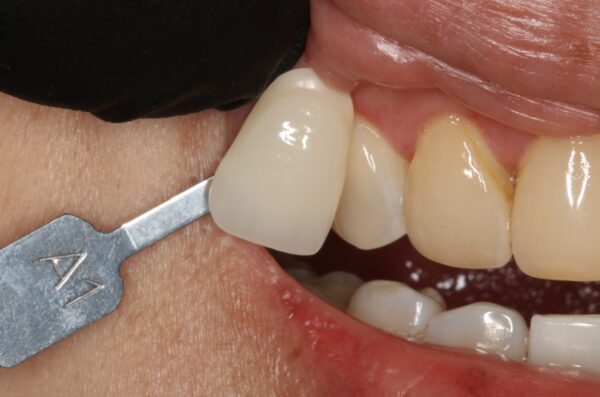
Figure 3
We decided to go with the BL4 shade knowing it would be lighter than the other maxillary teeth. She would continue to whiten o match the natural teeth to the restorations. We also explained that the color would be a gradation of lighter to a natural warm color at the gums (Fig. 4), and we elected not to have much incisal translucency. Involving the patient in this process allows them to better understand the challenges and the reason for using a high-quality aesthetic dental laboratory like Corr.
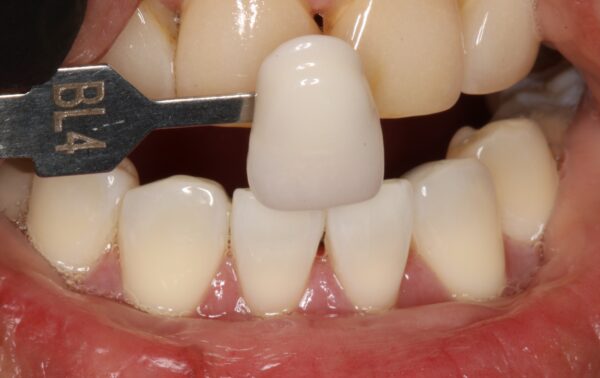
Figure 4
As soon as we did our rough preparation, we took the shade of the preparations (Fig. 5). The nicest veneers give us the color we desire without being too opaque. The experienced technicians at Corr can determine what opacity of material (e.max in this case) should be used to block out the dentin color, give us depth in the restoration, the desired higher value shade, and the nice gingival blend (Fig. 6).
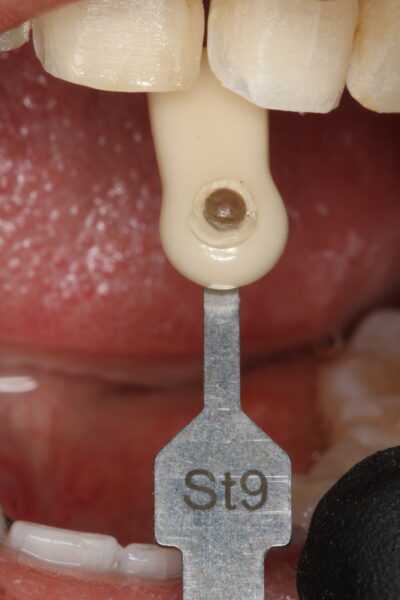
Figure 5
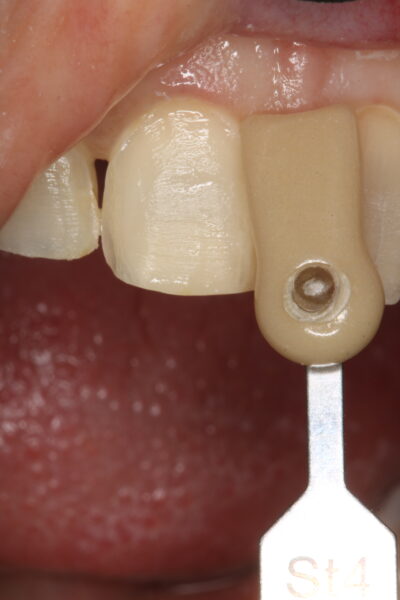
Figure 6
The patient’s desire to improve the appearance of the gingival margins, close the black triangles in the papilla area, and get rid of the overlapping centrals moved us into slice preparation territory, and slightly subgingival margin placement.
Dark Margins. I assured the patient we would be move the edges of the veneers further toward the gums so the dark lines would no longer be visible.
Dark Triangles. We went from equi-gingival margins to slightly subgingival so the laboratory could contour the porcelain’s interproximal emergence profile and close the space over the papilla (figure 7).
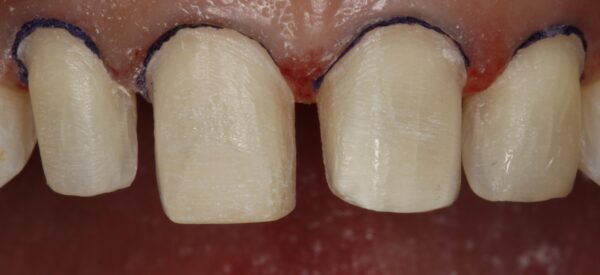
Figure 7
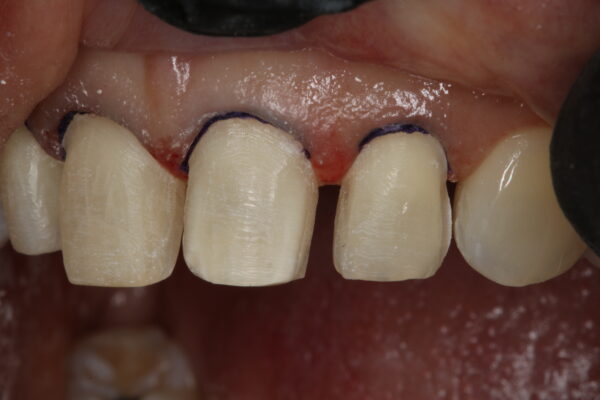
Figure 8
Overlapping Central Incisors. With the preparation design, we gave the laboratory the ability to correct the overlap in the final restorations. Because #9 was more facial it had a slightly shorter final preparation, and Figure 8 indicates what the preparation looked like between teeth #10 and 11 where a slice preparation was not done.
We used the temporaries (Fig. 9, 10 and 11) to confirm the patient was satisfied with the lighter color, length, and shape of the teeth (which we did not plan to change).
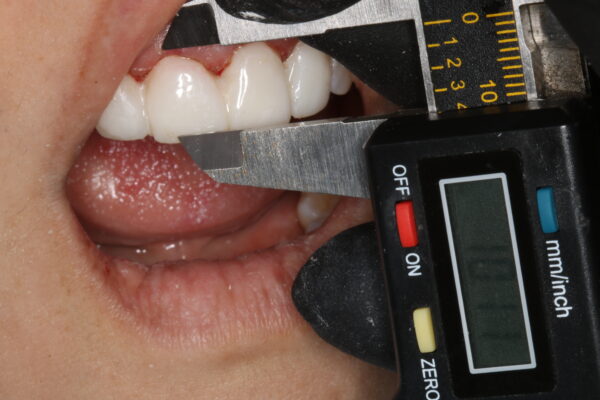
Figure 9
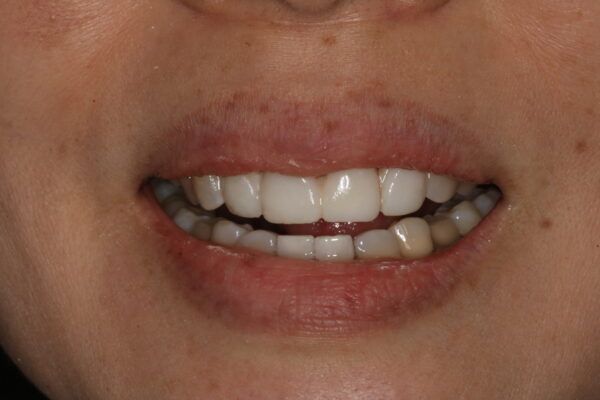
Figure 10
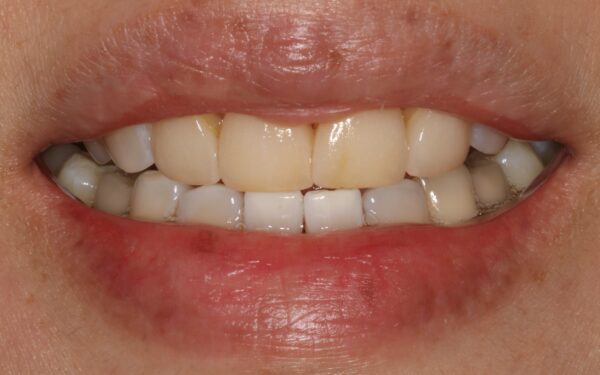
Figure 11
In this case we took care of the four primary identified desires, we built rapport, and always communicated clearly to work with the patient. Be prepared to handle both the large and the single unit cases. Each presents different challenges. Keep offering aesthetic improvements to your patients and be prepared to work with their desires whether it be a ‘new build’ or ‘remodel’. This is a part of dentistry that is fun and enjoyable. Work with your patients, set reasonable expectations, but then achieve the results that you both can be pleased with once the case is completed (Fig. 12-13).
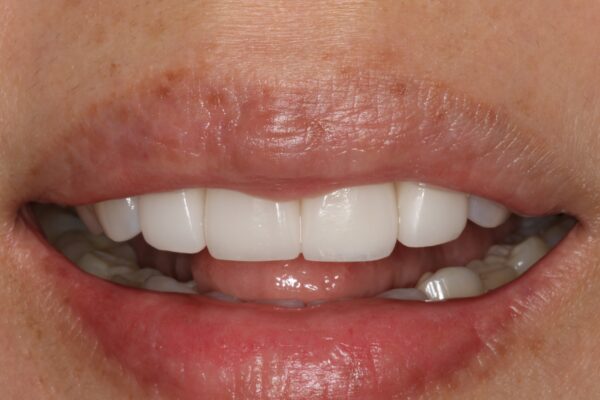
Figure 12
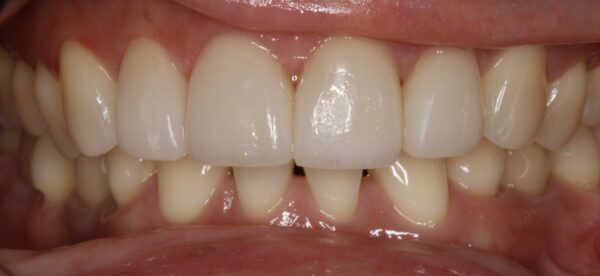
Figure 13
Working with a laboratory that understands and appreciates our clinical challenges and can deliver the color and contours we painstakingly seek to provide is why you select Corr Dental Designs. I thank the team at Corr Dental Designs for making everything so predictable.
If you would like to send a case, please contact the Pacific Aesthetic Laboratory Group at www.pacificaestheticdentalstudio.com, Gary Vaughn, CDT, CTO (916) 786-6740, or via email gvaughn@thePAC.org.
